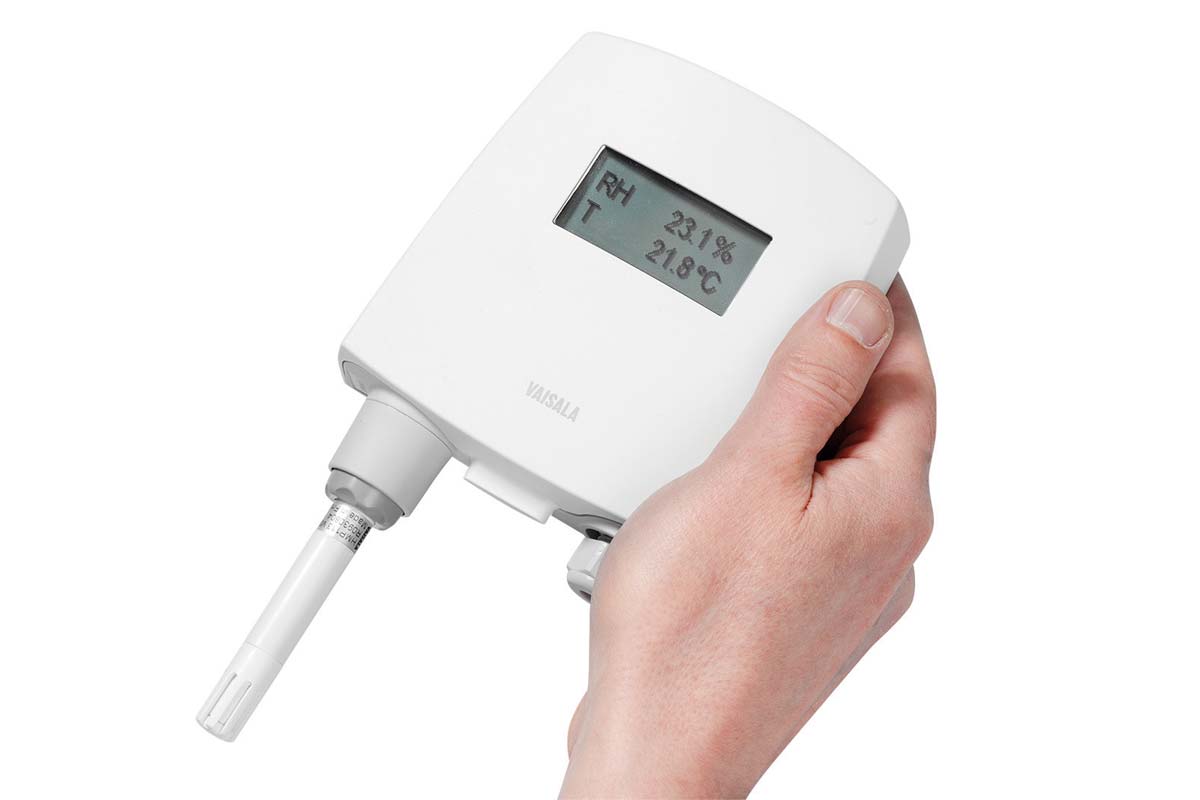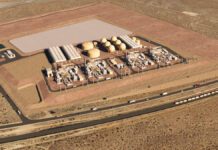Accounting for around 1% of global electricity consumption, the sector is heavily affected by turbulence in energy costs. Instrumentation firm Vaisala explores opportunities to tighten up energy usage.

humidity sensors
use a technology, HUMICAP®, which delivers long-term stability and insensitivity to interference from dust and condensation.
Around 60% of a data centre’s energy requirements are driven by its IT infrastructure, so there are energy reduction opportunities in (usually new) equipment that is more energy efficient. However, there are good opportunities for energy efficiency in the other 40% of energy demand, the majority of which comes from cooling and air-conditioning systems.
Efficient temperature and humidity control is important for the optimal functioning of IT infrastructure. In many modern facilities 99.999% uptime is expected, representing annual downtime of just a few minutes.
In common with all good process efficiency measures, effective energy management relies on the availability of accurate, reliable, continuous monitoring data. So, for data centres, what must be measured? and where?
Temperature
Cooling and air conditioning is necessary to remove heat and avoid over-heating. It is necessary to monitor temperature in the aisles and racks, as well as in all spaces, ducts in the ventilation system, cooling system pipes, and outdoors. Naturally, it is vital that the measurement locations are truly representative and that the network of sensors is able to detect any potential cold- or hot-spots.
Larger data halls can be more challenging to monitor because they have a greater potential for spatial temperature variability, so it is important that there are sufficient numbers of temperature sensors to ensure that all servers are monitored. Some servers may be close to a cooling unit and others may be further away; some may be at the bottom of a rack, and others higher up, so there is potential for three-dimensional variability. In addition to a sufficient number of sensors, it is also therefore important for air flow and cooling to be optimally distributed throughout the server room.
Most data centres will need to monitor ‘delta T’ – commonly defined as the temperature difference between hot and cold aisles. However, in reality, the situation is more complex because there are actually four different delta Ts that need to be monitored if cooling is to be as efficient as possible.
The most obvious delta T is the temperature difference in air before and after it passes through the IT equipment. The second frequently measured delta T is the temperature difference across the cooling equipment. However, in reality, the temperature of the air leaving the coolers is rarely the same as the air arriving at the IT equipment. This is usually because of issues such as obstructions, vortices, pressure differentials, air pockets etc. that cause cold air and warm air to mix. Similarly, the temperature of the air leaving IT equipment is frequently cooler by the time it enters the coolers. This is usually because cooled air mixes with the warmed air for a variety of reasons; all of which indicate inefficiency in air flow management.
By accurately monitoring these four delta Ts, data centre managers can gain a better understanding of the factors affecting cooling inefficiency, which can then inform mitigation and improvement measures to fine tune data centre performance.
In dry climates evaporative cooling is effective at dissipating heat. In cold climates direct cooling with dry, cold air can be used. In recent years, liquid cooling solutions have become popular because they are more effective at removing heat. To support this trend, Vaisala has developed a sensor for measuring cooling / heating liquid temperatures. The Vaisala TMI110 (pictured) is an immersion temperature transmitter offering a fast response with high levels of accuracy.
Humidity
IT equipment can also be adversely affected by humidity; low levels increase the risk of static electricity, so spray or evaporative humidifiers may be necessary. High humidity is also to be avoided because it can result in condensation, and the corrosion of metallic equipment.
In cooler climates it may be possible to utilize colder outside air to cool equipment in a process known as economization. The absolute water content of this outside air may be low, and since the relative humidity of air decreases when it is heated, the humidity level may fall below acceptable levels unless appropriate controls are in place.
Different types of humidity measurement are required, depending on the location and application. For example, relative humidity and dew point can be measured in rooms, spaces, ducts and outdoors, whereas wet bulb temperatures would be necessary in cooling towers and evaporative humidifiers, and enthalpy sensors may be required for airside economizers. Enthalpy expresses the total heat energy (sensible heat and latent heat) involved with thermodynamic changes. These calculated humidity parameters are typically available directly from advanced humidity sensors.
The three most common sensor configurations for airside economizer control are dry bulb, single enthalpy, and dual enthalpy. While dry bulb control is the simplest method, it may miss potential energy savings by not opening the economizer when the ambient temperature is slightly warmer but relatively dry.
Dual enthalpy works in a similar way, except that two enthalpy sensors are employed; one monitoring outdoor air, and the other return air. The economizer will run if the outdoor air enthalpy is less than the return enthalpy.
Vaisala’s transmitters are designed for applications such as air conditioning and economization; they can measure humidity and temperature, with derived outputs for dew point, wet bulb temperature and enthalpy. Temperature measurements do not generally suffer from drift, but traditional humidity sensors do. Vaisala’s humidity sensors use a technology which delivers long-term stability and insensitivity to interferences such as dust.
Air flow in ducts allows sensors to respond quickly to changing conditions, whereas air movement in rooms and other spaces can be slow, so some data centres prefer to use dew point temperature as a humidity control parameter because it does not depend on the temperature of the sensor.
Other sensors that may be deployed at data centres measure differential pressure in ducts and between hot and cold aisles, as well as additional outdoor meteorological parameters such as air pressure, rainfall, wind speed and direction. These measurements can be undertaken by an automatic weather station, by individual sensors, or by one of Vaisala’s WXT530 instruments, which utilize solid state technologies to minimize operating and maintenance costs.






